TWITTERING ON
By
Angela
Kelly
- because x’ing on doesn’t
sound quite the same
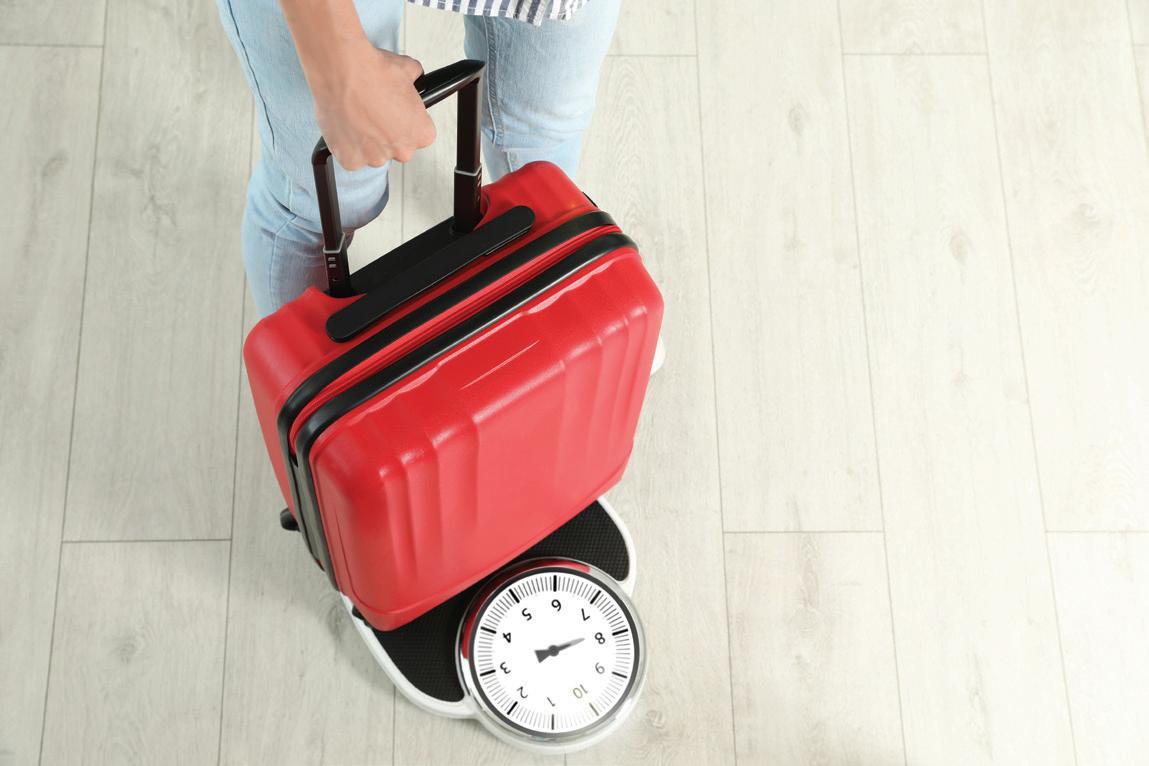
Debate over weighing air passengers and luggage
I SUPPOSE it had to happen eventually but now one airline is weighing passengers as well as their carry-on luggage.
Finnish carrier Finnair, which runs budget flights between Finland and the UK, wants to better estimate the plane’s weight before takeoff.
Apparently, airlines work out the weight of the plane, its interior and passengers to balance the flight and make the journey safer. They may use average weights provided by aviation authorities or collect data themselves.
The weigh-ins are voluntary and they’re not the first airline to do this. Last year, Korea’s largest airline, Korean Air, said it was planning to weigh passengers on international flights for a short time.
This was to reduce wasted fuel and for that more accurate overall weight estimateto, which must be a difficult “sum” to get right.
Not long before Korean Air’s move, EasyJet asked 19 passengers on a flight from Lanzarote to Liverpool to get off the plane because they said it was “too heavy to take off.”
The whole subject of the weight of both passengers and their luggage has sparked an outcry and I don’t know why we’re so surprised.
Not only are there plenty of overweight people around but the increasing cost of hold luggage – and the reduction of what weight airlines allow in a suitcase – has prompted some people to now cram items into carry-on luggage.
You’ve only got to look at what the overhead lockers are holding on the average flight to see where passengers have packed in the most possessions. Just trying to find a space for your own, probably quite modest, bag or backpack can be almost impossible.
The whole subject of passengers and weight is a regular minefield. In 2017, a poll by jetcost.co.uk showed almost 90 per cent of Britons

questioned believed that overweight passengers should pay more to fly.
And nearly 80 per cent said they thought “plus-sized zones” should be introduced on flights.
While there are currently no limits for larger passengers flying on commercial American flights there are some requirements. They must be able to sit with both armrests down, be able to buckle their seatbelts and they don’t block the aisle.
If they can’t comply, they may be asked to pay for a second seat on the flight, unless there are two empty seats together somewhere on the plane.
Either way, now that the subject of weight generally on planes has been broached, it won’t just go away.

House too chavvy? Just not your choice
YOU lay your lifestyle on the line when you put your home on the market these days.
Photos of your currently decorated rooms and décor choices are there for all to see and pick over. And, believe you me, people do like to criticise the decorating style of others.
Take the case of poor Henry Reilly, for example, He is trying to sell a three bedroomed, semi-detached house in Prescot on Merseyside but has found himself caught in an online trolling storm.
Chanel logo rug, black velvet chairs and glitterball-style vase with gold pink roses is “chavvy” and are highly critical of his general style tastes.
OK, it’s not everyone’s cup of tea but it seems to me quite snooty to take this high moral tone over what is actually just one man’s choice of the décor he wants to live with.
6 TWITTERING ON | 50 PLUS MAGAZINE
His neighbours say Henry and his wife are a “lovely couple” and that it’s up to them what they do with the house they live in. As one pointed out: who is anyone to tell someone else how to decorate their home?
The reality is that most people when they move into a new home change the style anyway. You may have just painted the hall, stairs and landing, put in a new kitchen or newly tiled the bathroom before putting it up for sale but if it’s not to the new buyer’s taste, it’s all change.
To unleash a storm of criticism on a homeowner who has simply surrounded himself with the style he enjoys strikes me as rude and snobby.
Few us share the same sense of homestyle and one man’s favourite is another man’s no-go area. We’re individuals and it really doesn’t matter.
Ever been wellied or squiffed?
HOW do you describe yourself when you’ve had one drink too many?
Wasted? Out of it or just plain drunk?
Well, linguistic researchers have discovered that virtually any noun can be transformed into a “drunkonym” – a synonym for intoxicated – simply by adding “ed” at the end.
In fact, they found 546 words that can mean drunk including “trolleyed”, “hammered,” “wellied” and “steampigged.” Then there is “gazeboed”, “carparked” or simply “cabbaged.”
This confirms a suggestion by comedian Michael McIntyre that Britons could understand any word meaning drunk if it is preceded by “I got completely ……”
Researcher Professor Christina Sanchez-Stockhammer of Chemnitz University in Germany believes that this could be down to Britain’s deeply-rooted culture of social drinking and its absurdist Monty Python-style humour.
She also pointed out other types of playful language around being drunk including Cockney rhyming slang like the drunkonyms “Brahms” and “Schindler’s” – short for “Brahms and Liszt” both of which rhyme with pi**ed.
Britain’s favourite drunkonyms, however, also include bladdered, langered, legless, mashed, mullered, pickled, trashed, bevvied, fuddled, hammered, paralytic, ossified, sozzled, well-oiled, leathered, spannered and squiffed.
But perhaps you’ve got you’ve got your own favourites!
Olivia is a star!
Olivia Hughes is studying for a degree while opening her own restaurant in County Tyrone, Northern Ireland.
Personally, I think a round of applause and huge envy for her energy and commitment are due but, apparently, some customers look down on her and older staff don’t respect her because of her age. Ignore all this, Olivia. You’re doing a great job, are a terrific role model for other youngsters - and I bet your parents are as proud as punch.

or email: help@aamail.org
7

quiet - is where the chariot races were held which also thrilled the crowds.
One of the greatest relics of ancient Rome is also its best preserved. The Pantheon was built as a temple in the 1st century BC, by the statesman and general Marcus Agrippa. Rebuilt by the emperor Hadrian in the first century AD, it became a church in 609. With its soaring dome and exquisite marble floors, it’s an awe-inspiring marvel of architecture and rightly draws crowds in large numbers.
The glories of the Renaissance
Rome was at the centre of the tremendous flowering of intellectual and artistic activity we know as the Renaissance and some of the greatest geniuses of the time made Rome their home. The popes were tremendous collectors and patrons of the arts so it’s little wonder that many of the most astonishing treasures of the times lie in the Vatican City. The Vatican Museums contain one of the world’s greatest art collections and are so vast that you may want to plan your visit. The great highlights however, remain the four rooms painted by Raphael and the Sistine Chapel, Michelangelo’s stupendous masterpiece.
Built over the tomb of the disciple and martyr, St Peter’s was designed by Bramante and begun in 1503 on the orders of the indomitable Pope Julius II. This colossal basilica is one of the world’s great hubs of Christianity and is where you’ll find the Pieta, the magnificent sculptural ensemble Michelangelo created in 1499 at 24 and the only work he ever signed.
Strolling about
Some of the most arresting sights of Rome are its great outdoor spaces which are all the more romantic at night. The Piazza Navona is one of Rome’s most strikingly beautiful squares with its gorgeous Baroque fountains by Bernini. For centuries, the Piazza di Spagna has been a favourite meeting spot for locals and visitors. Keats-Shelley House lies at the bottom of the Spanish Steps, which are often decked with flowers and sweep up from the Piazza to the Church of the Trinita dei Monti.
At the end of the Corso, where you can shop to your heart’s content, lies the spacious Piazza del Popolo, which revolves around
the Egyptian obelisk the emperor Augustus brought from Egypt and is flanked by elegant lookalike churches built in the 17th century. From here you can make your way to the Villa Borghese Gardens, a green oasis where the Galleria Borghese, a noted collection of art, stands.
Today, if you want to throw a coin in the Trevi Fountain, you’ll have to fight your way through the crowds. But if you haven’t visited before this fountain, presided over by the mighty Neptune, is a must-see. And the coin ensures that you’ll return to Rome so just to be sure, you might want to toss one in.

Next steps
Silver Travel Advisor can plan and book your short break in Rome, or alternatively a tour of Italy that includes this marvellous city. Call 0800 412 5678 to discuss your options.

9
Roman Forum
Piazza Navona


When it comes to inviting, relaxing breaks, we have the ideal holiday for you...
Whether you’re looking for a romantic break for two, a family holiday or getting away with friends, Daish’s Holidays offers 12 hotels in 10 of the most popular UK destinations. Our fleet of 35 luxury coaches provide return travel in comfort and style from your pick up point and will take you directly to your hotel, aiming to arrive between 3 – 5pm.
If you’d like to get out and about to explore the local area on your holiday, then all of our breaks can also be booked on a self-drive basis so you’ve got the freedom of having your own car.

Trip Advisor’s Travellers’ Choice
We are proud to announce that six of our group – County, Devonshire, Abbey Lawn, Bournemouth Sands, Daish’s, Imperial – have been awarded the coveted TripAdvisor Travellers’ Choice award for 2023.
Every
Newquay Blackpool Lake District Eastbourne Scarborough Bournemouth Torquay Isle of Wight Weymouth Llandudno £229 GREAT VALUE 5 DAY HALF BOARD BREAKS per person from
inclusive breaks Request your brochure now! Return coach travel (self-drive option available) Comfy en suite accommodation Breakfast & 3-course evening meal Live nightly entertainment
break includes:
Self-drive & coach












Prices shown are per person based on two people sharing a Standard Room. Supplements apply on twin/double rooms with sole occupancy. Optional local excursions can be booked at the hotel. Many more coach or self-drive holiday dates available in 2024. If you would prefer to self-drive, deduct £20 per person from prices shown. Offer ends 31th May 2024 Call 01202 638 840 or visit daishs.com facebook.com/daishs Call 01202 638 840 Quote 50PlusWY DATE HOTEL DAYS PRICE MAY 10 Barrowfield Hotel – Newquay 5 £229 10 Russell Hotel – Weymouth 5 £244 12 Abbey Lawn Hotel – Torquay 5 £259 12 Sands Hotel – Bournemouth 5 £249 14 Daish’s Blackpool Hotel – Blackpool 5 £239 15 County Hotel – Lake District 5 £294 16 Imperial Hotel – Eastbourne 5 £284 17 Esplanade Hotel – Scarborough 5 £274 18 Barrowfield Hotel – Newquay 5 £234 20 Sands Hotel – Bournemouth 5 £254 21 Hotel Prince Regent – Weymouth 5 £309 23 Devonshire Hotel – Torquay 5 £254 24 Imperial Hotel – Eastbourne 5 £294 26 Russell Hotel – Weymouth 5 £264 28 Abbey Lawn Hotel – Torquay 5 £274 30 Daish’s Blackpool Hotel – Blackpool 5 £254 Don’t miss these coach inclusive breaks! Local pick up points from make it easy to get away. Halifax, Bradford, Leeds, Wakefield (Denby Dale Road), Sheffield, Tibshelf. All offers are subject to availability and standard terms and conditions (see brochure or website for T&C’s). 10 fabulous locations, 12 great hotels. Llandudno Somerset Hotel Scarborough Esplanade Hotel Blackpool Daish’s Blackpool Hotel Weymouth Russell Hotel Eastbourne Imperial Hotel Bournemouth Bournemouth Sands Newquay Barrowfield Hotel Torquay Devonshire Hotel Weymouth Hotel Prince Regent Isle of Wight Daish’s Hotel Lake District County Hotel Torquay Abbey Lawn Hotel DATE HOTEL DAYS PRICE JUNE 01 Imperial Hotel – Eastbourne 5 £304 02 Esplanade Hotel – Scarborough 5 £299 03 Barrowfield Hotel – Newquay 5 £254 03 Russell Hotel – Weymouth 5 £269 04 Somerset Hotel – Llandudno 5 £314 05 Sands Hotel – Bournemouth 5 £269 06 Hotel Prince Regent – Weymouth 5 £324 07 Daish’s Blackpool Hotel – Blackpool 5 £259 08 Devonshire Hotel – Torquay 5 £269 09 Imperial Hotel – Eastbourne 5 £314 11 Barrowfield Hotel – Newquay 5 £259 11 Russell Hotel – Weymouth 5 £279 13 Abbey Lawn Hotel – Torquay 5 £284 14 Daish’s Hotel – Isle of Wight 5 £279 15 Daish’s Blackpool Hotel – Blackpool 5 £264 16 County Hotel – Lake District 5 £344 17 Imperial Hotel – Eastbourne 5 £324 18 Esplanade Hotel – Scarborough 5 £324 20 Somerset Hotel – Llandudno 5 £339 21 Sands Hotel – Bournemouth 5 £284 22 Hotel Prince Regent – Weymouth 5 £339 24 Devonshire Hotel – Torquay 5 £284 25 Imperial Hotel – Eastbourne 5 £334 27 Barrowfield Hotel – Newquay 5 £269

Wonderful Copenhagen
By Rebecca Underwood, BA Hons | Travel Journalist

Danny Kaye once sang ‘wonderful, wonderful Copenhagen, friendly old girl of a town’, and it sure is! Copenhagen, located on Sealand, the largest island in Denmark, offers visitors an intriguing glimpse into a colourful tapestry of history and culture.
In the 10th century, Copenhagen was a Viking fishing village and became the capital of Denmark in the 15th century.
To learn more about the fearsome Vikings I visited the fascinating Viking Ship Museum, located by the fjord in Roskilde; 35 kilometres from Copenhagen. The Viking Ship Hall features five spectacular Viking ships, which were discovered in 1962 at Skuldelev, 32 kilometres from where they are now displayed. These magnificent vessels were excavated from the sea bed in thousands of pieces and

reconstructed with spectacular results. Visitors are also welcome to view the collection of traditional Nordic wooden boats berthed at the Museum Harbour and, as I am a committed seafarer, I was simply mesmerised.
Copenhagen attracts millions of visitors keen to explore this wonderful city and its many attractions including Amalienborg. Built in the 1750’s, the site is made up of four identical Danish Rococco style buildings; the palace of Christian VII, husband to Caroline Mathilde of Great Britain, the palace of Christian VIII, the palace of Frederik VIII, great, great grandfather of the reigning Danish monarch King Frederik X, and the palace of Christian IX, the first monarch of the House of Glücksburg.
Eager to know more, I made my way to the the Amalienborg Museum, located within Christian VIII’s Palace, which displays a wide range of exhibits associated with the Danish monarchy dating back 150 years to Christian IX and Queen Louise.
I decided to mingle with the crowds at 12 noon sharp and I watched the changing of the royal guard marching from their barracks through the streets towards Amalienborg.
My next port of call was the National Museum, housed in the Prince’s Palace on Ny Vestergade. The Danish national treasures include archaeological finds from the Viking Age and the permanent displays include an extensive coin and medal collection, classical antiquities and a toy museum which attracts hordes of ‘grown up’ children!


12
TRAVEL | 50 PLUS MAGAZINE
Amalienborg courtesy Marc Skafte-Vaabengaard
Suite at the D’Angleterre hotel Balthazar Champagne Bar
D’Angleterre hotel pool
SPRING CLEAN YOUR LIFESTYLE

SPRING is a time of new beginnings for Nature and a time of Spring-cleaning and a new assessment of your home and lifestyle.
And if there’s one thing we’ve learned over the last couple of years thanks to lockdown, it’s focusing on what is important to us in life and trying to achieve it.
Even given tough financial times, lifestyles can easily change for the better for many people. The emphasis on work/life balance, budgeting to concentrate on the importance of basic vital elements and making life choices that enhance our lives are all welcome.
Contemporary homes reflect this more and more so Spring is a good time to decide how you want to improve your life and daily living – and take action.
ENERGY consumption is top of everyone’s budgeting list today so perhaps it’s time for realistic advice from your local heating engineer about making the most of your energy supply.
There are many different schools of thought on the best way to heat your home so getting plenty of individual information about your property’s needs is best.
For example, solar panels (with a storage battery) have come into their own now, with many people making use of the stored energy via electric cars in joined-up thinking that makes sense.
One mantra is insulation: ensure your loft is fully insulated. You may be able to get free insulation or support. For more information go to https://www.gov.uk/apply-great-britishinsulation-scheme
There are also simple ploys around the house. For example, ensure back and front DOORS fit properly and don’t lose valuable heat in cold weather.
The same for windows, especially if they’re double-glazed. Check that they all fit properly and don’t let in a draught. If they do, it’s worth considering replacing what you can afford to.
Lined CURTAINS can help your heating work better and feel cosier all year round. Many people are now going for a blinds/
curtains combination that looks attractive on windows and helps with better insulation.
Move furniture away from heat sources. This sounds like a no-brainer but a couch or a bed left in front or very near a radiator or other heat source can just block warm air from circulating around the room.
RECYCLING matters far more to people now that we are all trying to take a more responsible stance on the planet’s resources. The UK produces 26 million tonnes of waste a year but recycling doesn’t just mean separating your rubbish and wasting less food.
It also means not necessarily buying new items like clothes, furniture and electrical goods. We lower our environmental impact if we buy second-hand and the first three places worth looking at are local businesses, online marketplaces and charity shops.
For the last, check out your local area but if you want to save time, download the app from the Charity Retail Association. This is the UK trade association for charity shops and you can find out more about them at https://www.charityretail.org.uk/
Flea markets and car boot sales are also ideal for searching out those bargains and there are plenty of online marketplaces like Gumtree, eBay and Facebook Marketplace. For books try World of Books or Oxfam and for clothes download the Vinted and Depop apps.
Look for FURNITURE bargains and support local charities at the same time. The British Heart Foundation https://www.bhf.org. uk and homeless charity Emmaus https://emmaus.org.uk offer cheaper second-hand and often new furniture so find out your nearest centre and have a look.
You can also sell pre-loved items on Vinted, eBay, Gumtree and many other online marketplaces to create a valuable side-hustle

16 HOME | 50 PLUS MAGAZINE
and keep those useful items circulating. In fact, it’s called the Circular Economy.
Repair your own GADGETS to save money and prevent them having to go to landfill. The Repair Café, an international movement, is particularly interesting here as experts and others offer to help you repair items free. Look out for one in your local area or visit the website https://repaircafe. org.en
Is your home helping your WELLBEING? Is the ventilation good, promoting air quality flow throughout?
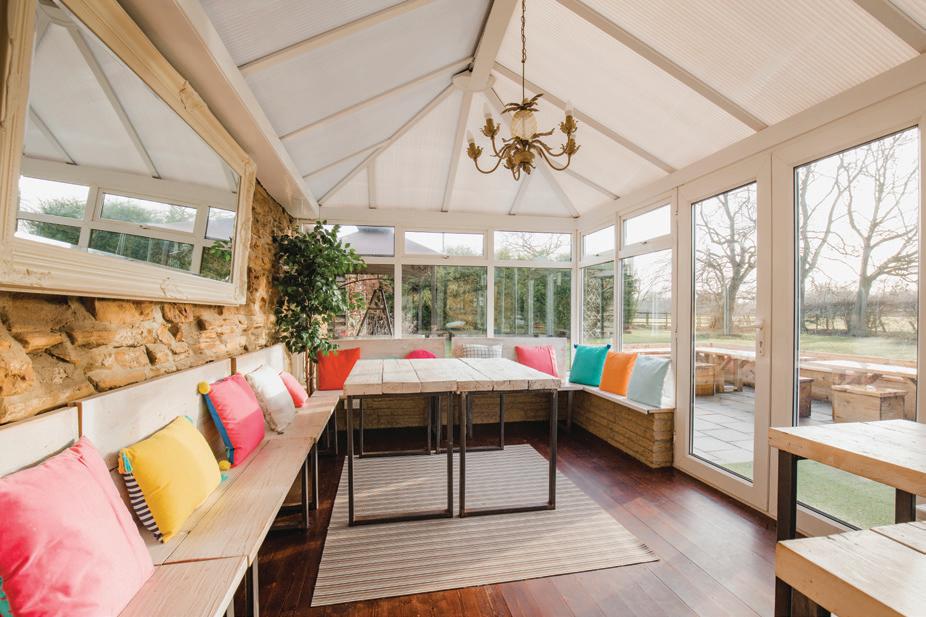
It’s an old but true adage that fresh air is good for you, even while we keep in valuable heat during the colder months. Looking forward to the months when we can open doors and windows to get more air circulating, though, it’s worth checking that useful flow through.
Can you turn a ROOM into somewhere you can enjoy a pleasing hobby like sewing, model-making or even into a small gym? Having the facility for home-workouts can save you money and help all those other New Year resolutions about health and fitness.
This need not cost a fortune, either. If you need structural changes, get a good local BUILDER on referral and check out their work beforehand.
Do you need extra space? Having a CONSERVATORY or ORANGERIE not only adds more room to your home but can
Wetroom & Walk-in Shower Specialists

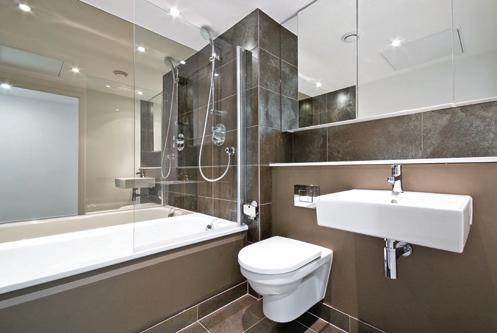
Victoria Mill, Albert Street, Lockwood, Huddersfield
Tel: 01484 547110
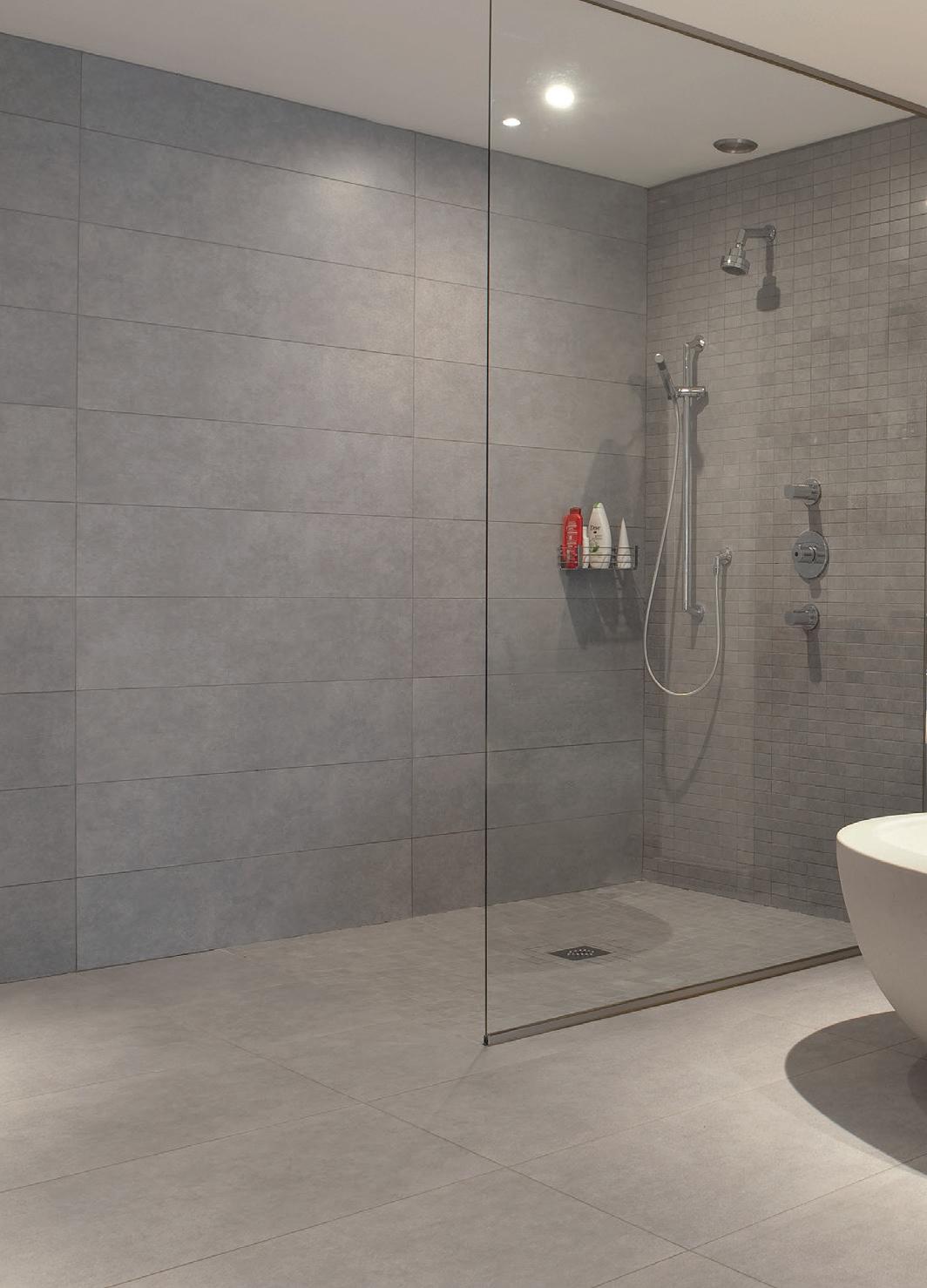
Open: Monday to Friday, 9am to 5pm Saturday, 9am to 4pm
Email: hudd@atlasbathrooms.co.uk
www.atlasbathrooms.co.uk
offer a healthier lifestyle, too. Again, go on a personal recommendation and see what a local builder has done already before you commit to a project.
We all need good, relaxing deep sleep but your BED or BEDROOM may be sabotaging this. Sleep experts say we should change our beds every eight years for healthy living.
Make your bedroom as relaxing as possible to aid the right kind of sleep. Blackout curtains filter out light and restful décor in neutral shades like beige and lavender all help; add a dimmer switch to your lights to enhance these pleasing tones.
Generally, DECLUTTER your home to promote that positive feeling of wellbeing and order. Go through boxes of possessions and see what is worth keeping, recycling or giving to charity.
Clear entrances like hallways and the upstairs landing to promote a feeling of space throughout and take an objective look at your living areas.
Is your living room overcrowded with unnecessary furniture? Do you need some pleasing pictures to enhance walls or how about a grouping of photographs of loved ones?
Whatever enhances your enjoyment of life is worth trying now in your home.
Great choices for the smallest room

Thinking of updating your bathroom? Then take a look at the extensive showroom at Huddersfield’s Atlas Bathrooms of Lockwood With now even more choice in store, Atlas has invested heavily in the extensive showroom and now has even more displays of bath suites, showers and wet rooms to choose from.
It now has one of the biggest displays of bathrooms and accessories in the Huddersfield area Spread over two floors it has ranges from top manufacturers including Jacuzzi, Heritage, Roca and Ideal Standard
There is also plenty to suit all budgets with bathrooms and showers ranging in price from affordable to the luxurious end of the market.
For more information, look at the website www.atlasbathrooms.co.uk or ring 01484 547110.










17
Gardening for Spring
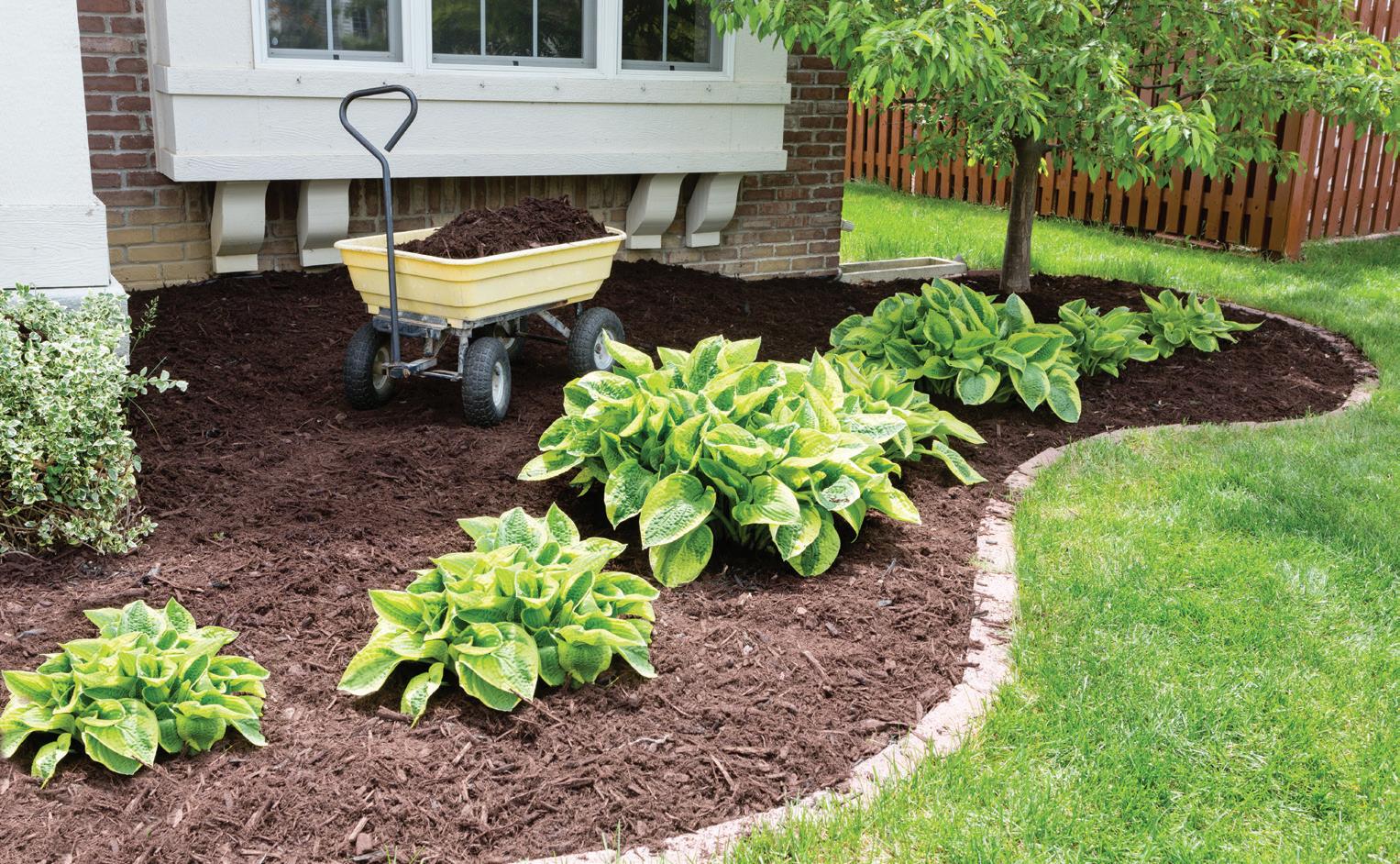
Planning is the key to success in the spring garden says garden writer Julia Heaton.
Sunshine days of summer may seem an age away but spring certainly isn’t. So now is the ideal time to get some basic jobs out of the way in preparation for the new season and the pruning, planting and seed sowing ahead. Here are some of my essential tips to give you that all important head-start.
If you didn’t clean your hand tools (rakes, spades, trowels) properly on their last outing go ahead and remove any remnants of soil from the heads using a bristle brush. Leave them to soak in a mix of water and 10 per cent bleach for around half an hour, then dry them off and wipe down with an oily rag before storing.

As well as cleaning in water and detergent any bladed tools – like pruning knives, secateurs and garden shears – will benefit from sharpening and oiling so they provide nice clean cuts and stop the risk of spreading disease between plants. This will also make your tools easier to use and ensure they last, saving you money in the long term.
There’s also garden machinery, like the lawnmower, to check over. The latter needs to be in good working order and safe so make sure electric cables aren’t worn or chafed and that blades are clean and sharp. If you have a petrol mower it’s a good idea to drain any fuel off as it will have deteriorated during the cold winter weather.
Don’t wait for pests to make a meal of your perennials. As temperatures in the ground start to rise hunt down slugs and snails emerging from hibernation and eggs preparing to hatch. Look for groups of tiny yellow and white eggs in sheltered places like underneath stones, shrubs or
in the crown of perennial plants. Then leave them unprotected in the sunlight so that other wildlife can feed on them.
Beer traps are one of the many options for dealing with the adults.You could also create some dark, damp, places where they’ll love to hide out during the day – then all you need do is collect them. There are also deterrents like crushed egg shells, copper tape and coffee grounds. Consider also introducing plants that slugs avoid like agapanthus and Dicentra spectabilis.
Test the soil: Once you’ve done a soil test you’ll know which plants will and won’t flourish in your garden. Tests from garden centres will tell you the pH level of the soil (whether alkaline, neutral or acid) so you can adjust it accordingly and make a more informed decision about what to grow.
Annual weeds, like meadow grass and groundsel, are easy enough to pull-up but perennial weeds, such as couch grass, bindweed and dandelions, need careful handling. There are different types of weedkiller that you can call upon, depending on the area you want to treat. In densely planted borders though it’s probably better to do the job by hand. Just ensure that you remove as much of the root as possible, so there’s no chance of them re-sprouting.
Add some nutrients, by way of a general fertiliser, to mixed borders of trees, perennials, bulbs and shrubs. General fertilisers come in various forms including granular. This just requires sprinkling evenly throughout the border, according to the instructions on the box, and forking in. The latter is important as concentrations of fertiliser lying against plants can burn them.

18
GARDEN | 50 PLUS MAGAZINE
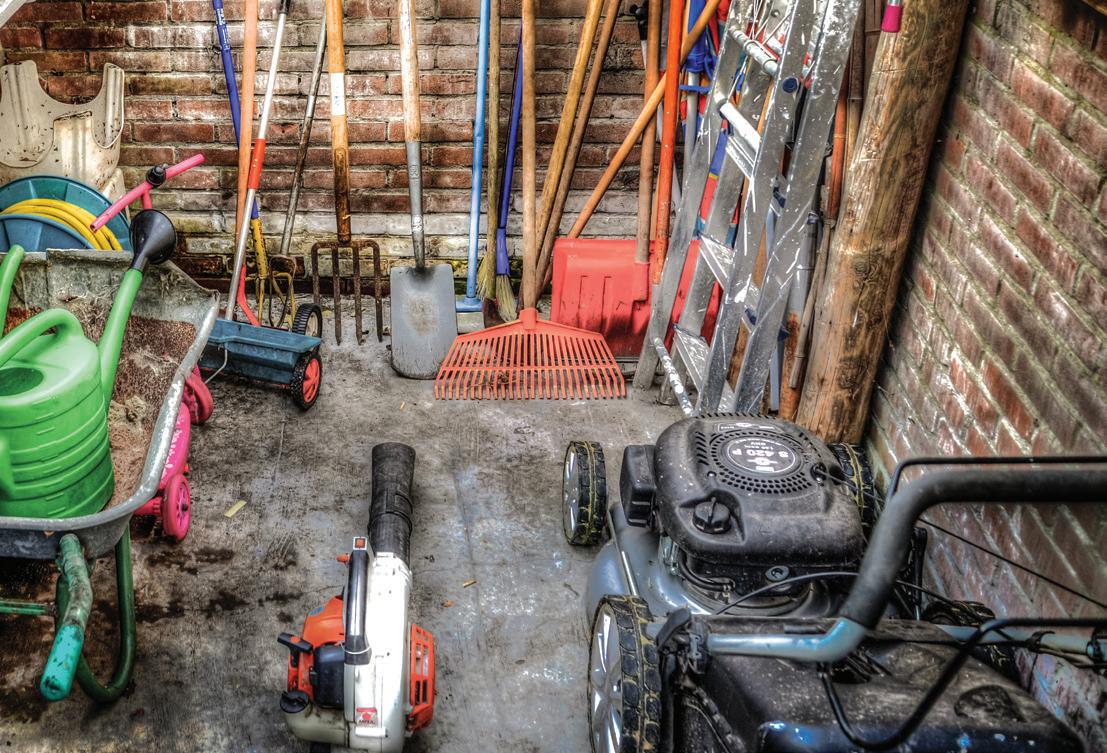
Once you’ve weeded and fed borders add a mulch. This is a layer of well-rotted garden compost, mushroom compost, bark or bagged soil improver and is one of the best things you can do for your plants. When spread an inch or more thick on the soil surface it acts like a barrier, depriving weeds of the light they need to germinate and trapping moisture so that plants have plenty to call upon when temperatures rise. All you need to do is leave nature to take its course as it rots down, improving structure and providing nutrients.
Container plants can’t always be repotted. If you’ve got a shrub, fruit tree or perennial growing in compost that’s a year old or more then a layer of fresh compost will be beneficial. Scrape away an inch or so of the old compost from the surface and replace with fresh. Plant roots will soon feel the benefit as creatures and microbes gradually integrate old with new.
Sweep down floors and surfaces. Tools in the shed should be hung so that you can get to them easily. The less clutter on the floor the better.
Wash down greenhouse windows inside and out with disinfectant. This will ensure that plants get enough light and also destroy any potential homes for pests and diseases to lurk in. Make sure all pots and seed trays from last year are clean too. Then leave the door and windows open to help the space dry off. Remember also to check glass for any damage and replace panes if necessary.
If your patio or paths are regularly in the shade then it can lead to a build-up of moss and green algae during winter, making it slippery and unsightly. If it’s not too bad then soapy water and a brush should do the job. Otherwise use a patio, path cleaner or pressure washer to despatch it. There are also specialist cleaners for wooden decking.
Check out fencing and other wooden structures like gates and pergolas and deal with any rot or winter damage. A power washer will help remove any dirt, moss or mildew and when completely dry freshen up with a couple of coats of wood preservative or paint.
If you haven’t already got a water butt it’s worth installing one in the long run. Use a diverter kit to siphon off rainwater from a downpipe on the side of your house. Harvesting rainfall is environmentally friendly and rain water is the better than tap water for plants.
Ericaceous types, like camellias, particularly benefit as tap water is often more alkaline. Just as importantly, installing a few butts is good for your water bill too.
Finally, take a quick inventory of what’s already in the shed and what you’ll be needing. Everything from compost and seeds down to pots and feed. This is also an ideal time to plan the summer-flowering bulbs you’ll want to plant in early spring. Having a proper shopping list will help you focus on exactly what you want to accomplish this year.
Here’s a few more ideas to give your outdoor space a lift in 2024.
Is there a view or attractive feature beyond your garden that you could focus the eye on to make your plot feel bigger than it actually is? It could be a church spire, a group of trees or perhaps some hills on the horizon. Trimming an opening in a hedge will frame the scene and draw the eye to what lies outside as will creating a ‘window’ in a boundary wall. Some rustic screening or trellising with an archway in it can have the same effect. Alternatively, use a simple pair of trees in pots or two attractive tall urns either side of a feature to direct attention to it.
Many modern flowers offer wildlife little or no nectar or have such large and intricate flower heads that insects can’t find a way inside to reach it. Provide a helping hand by planting a native wildflower patch that will offer food, in the form of pollen, seeds, fruits, nectar and foliage to feast on, as well as shelter and nesting sites.
Gardening is a fantastic form of exercise, but as with all activities it’s better to build up slowly. Here are my top tips to keep you happy and pain free in the garden this spring.
1. Have a warm up before you start. A 10-minute walk with some gentle shoulder rolls, or slowly marching on the spot can help get your body moving.
2. Breaking sessions down into 30 minute chunks and taking time to rest between can really help prevent niggles and stiffness the next day
3. Lower backs and knees are particularly susceptible to gardening related injuries. Simple steps like sitting on a stool rather than constant bending, or using a kneeling pad can be of great benefit. Additionally, if lifting heavy things don’t be afraid to ask for help or do two trips instead of one.
4.Be aware of your posture when pruning hedges, especially if they are overhead height. Try and keep your shoulders relaxed to prevent extra strain on the neck.
5. As the warmer weather comes keep hydrated with plenty of water
6. If you are feeling any pain afterwards use an ice pack wrapped in a towel for 10-15 minutes on the affected area.
19
What Sort of Garden will you grow?

The snowdrops are showing, the hellebores are in bloom, and the camellia buds are turning pink. It’s definitely time to start planning your garden for the year ahead.
What do you want from your garden? Do you love your herbaceous border, or would you rather while away the afternoon with a good book. Do you use your garden for weekend barbecues, or do you prefer raising plants from seed in your greenhouse. In other words, are you looking for a labour saving garden, or are you a plantsman, nurturing seedlings and happy to spend hours weeding and staking.
The garden as an outdoor room
If you want an attractive garden where you can sit in the sun and eat outdoors as often as possible, then it makes sense to go for a sweep of lawn, and plenty of paved area. You’ll want to cut down on the bedding plants and herbaceous borders, and go for something which needs as little maintenance as possible.
The
patio
Make sure there’s enough room to take table and chairs, recliners and barbecue gear. A well laid patio is labour saving, needs nothing more than the occasional brush over, and you can walk on it at any time of year. York stone, brick, or textured concrete slabs which weather and look like natural stone are all useful options, or you could go for decking, which is relatively easy to put down. For winter, to add greenery, box or bay in pots look good, trimmed into pyramids or balls, and for summer, bring in blocks of colour with pots of geraniums or fuchsias. If you want to move these around, you can buy useful little stands on wheels, so that even the heaviest pots can be moved at will.
Plantings
Go for shrubs and perennials, with blocks of colour on the patio provided with pots of geraniums, fuchsias and begonias. Shrubs such as Mahonia and Skimmia will form a pleasant backdrop, and can be allowed to grow without looking neglected. They also have the added bonus of flowers and berries. For a touch of colour, try the yellow leafed variety of Choisya Ternata, which gives the impression of sun on its leaves, even when it’s raining. Try Cistus, with its glossy, evergreen foliage and vivid flowers or Hebes, which can be found in most nurseries. This is also evergreen, with flowers ranging in colour from white to deepest red.If you spread a good thick mulch around these shrubs, the moisture is kept in the soil, and the weeds are kept down. In front of the shrubs, use ground cover plants. Sedums are good, with pale green foliage and flowers which resemble pink broccoli heads. Butterflies and bees love them, and even when the flowers dry out, the seed heads remain attractive. Bergenias are another good ground cover, with huge, polished leaves and luxurious stems of pink flowers in January.
For the keen gardener
A garden design for the gardening fanatic would be quite different. Of course, you still want to sit out in it occasionally, but with the true gardener, the real pleasure comes from working in the garden. You need a sunny spot for a greenhouse; you’ll want wide flower beds for herbaceous borders, and plenty of trellis work for roses and clematis. You’ll probably want a water feature as well, to encourage wild life.

20
GARDEN | 50 PLUS MAGAZINE
The Water Feature
These have moved on since the days of concrete fountains set in a pond filled with black vinyl. Some of the most attractive I’ve seen recently include blocks of natural stone, bored through to take a water pipe, which is flush with the stone. More natural stones form the base, so the effect is of water flowing through outcrops of rock. The constant splashing of water will attract
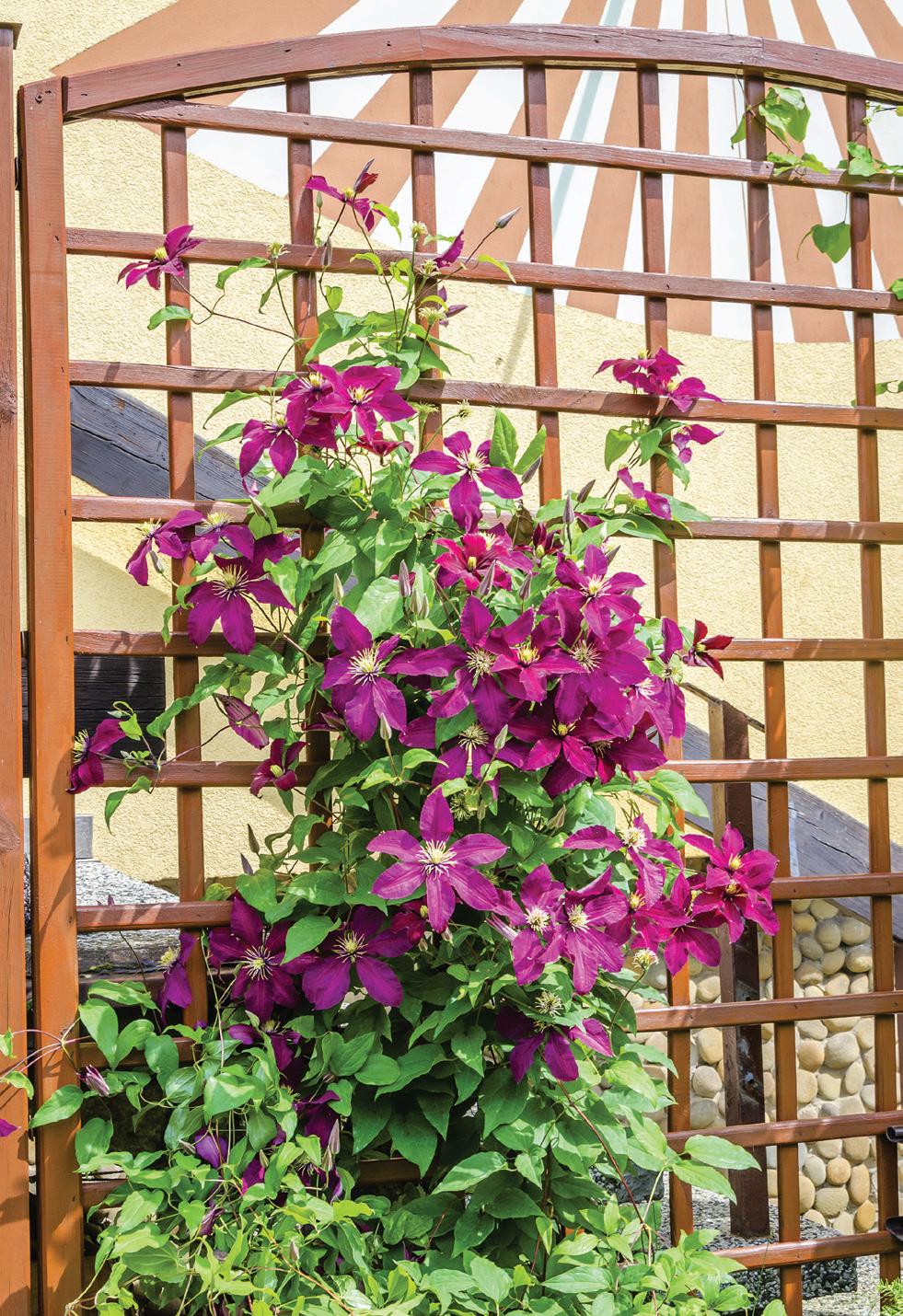
birds and the surrounding damp area will encourage frogs.
The plantings
Most keen gardeners love their herbaceous borders, and it’s useful to have a good, sturdy trellis as a backdrop, to provide support for roses and clematis. For the midsummer garden, remember last summer, when many areas of the country were on hose pipe bans, and go for plants which can more easily tolerate drought conditions. Lavender, helianthemums, valerian, and acanthus all provide attractive foliage and colour, and the wonderful spherical flower heads of alliums provide a striking accent in mid border. Another plant which is gaining in popularity is the lily, and Lilium Regale, with its pink buds opening to purest white, is one of the easiest to grow, with the added bonus of delicious scent, especially in the late afternoon and evening.
Saving water
We’re told that this summer will be as hot as last year, so remember to check out available water butts. There is now a wider variety of shapes and sizes, and even if you can’t
accommodate a full size one, there are smaller ones available which could provide you with rain water if hose pipes are banned again.
Climbing plants
All gardens need climbing plants, and clematis figure very large in this category. There are now so many varieties of clematis available, that you could have one flowering at almost any time of year. Try the bright yellow clematis tangutica, which flowers well into the autumn, then shows off its silvery white seeds heads, and for early spring, the blue clematis alpina is very frost resistant. No garden would be complete without climbing roses. Some of these will flower all summer, and some have just one spectacular blooming period, so it’s as well to check on this when you buy, and if you feel that a rose is not a rose unless it’s scented, then make sure to check on that as well. Other climbing plants, which involve more attention as they’re grown from seed, are sweet peas and Black Eyed Susan. Last year, I grew my sweet peas in a large pot within a black obelisk framework. It worked well, looked good and because they were in a pot, I could keep the plants well watered. I was rewarded with plenty of sweet smelling flowers for the house, and a feeling of achievement that a bunch of perfect, scented blooms can bring.
All gardens are as individual as their owners, so whether you’re a lazy gardener, or a full time, hands on plantsman, start planning now, to make the most of the summer.

Check list to prepare for a long hot summer
Water butt. Mulch. Trellis. Greenhouse shading. Flower pots. Seeds and seed trays. Potting up tray. Potting compost.
21
EASY TAPAS RECIPES

Whipped Feta & Sun Dried Tomato Dip
Method
l Prep: 10 minutes
l Cook: 5 minutes
l Serves 6
Ingredients
150g feta, crumbled
165g tub cream cheese
150g Cooks & Co Sun Dried Tomatoes
100ml double cream
1 Cooks & Co Red & Yellow Peppers (1/2 of each), finely chopped
3 bagels
Whisk the feta, cream cheese and ½ the sun dried tomatoes with 2 tbsp of the tomato oil, whisk in the cream until slightly thickened.
Season and stir in the remaining sun dried tomatoes, chopped and the peppers.
Slice each of the bagels horizontally into 4 circles and place on a large baking tray, grill until golden on both sides.
Sprinkle the sweety drop peppers over the dip and serve with the bagel chips.
25g Cooks & Co Sweety Drop Peppers Cook tip
Also great spooned onto jacket potatoes or toasted bread.
22
FOOD | 50 PLUS MAGAZINE
Creamy Porcini Crostini
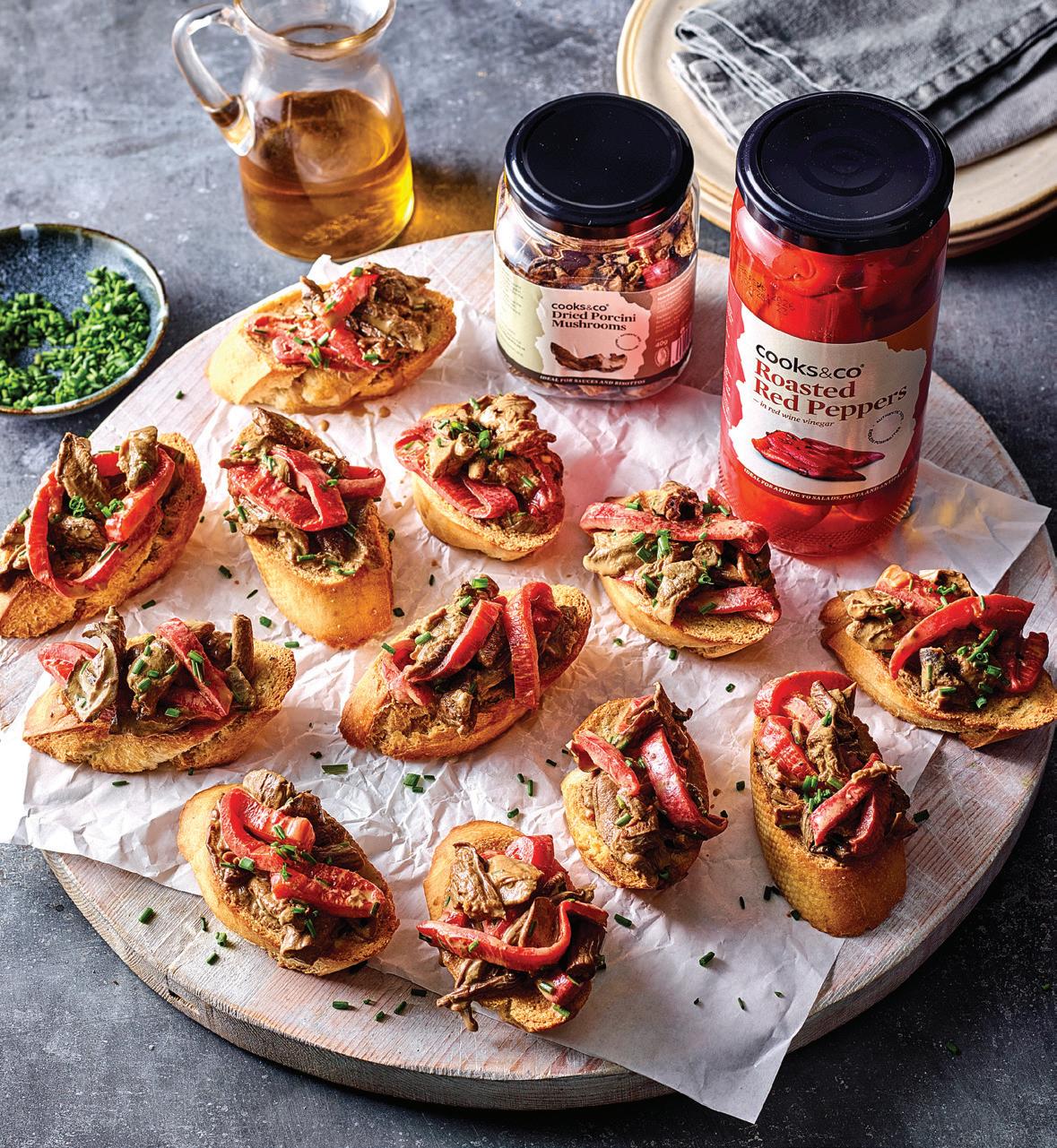
l Prep: 10 minutes l Cook: 15 minutes
l Makes 12
12 x 2cm slices French bread
2 tbsp extra virgin olive oil
50g Cooks & Co Dried Porcini Mushrooms
1 clove garlic, finely chopped
2 Cooks & Co Roasted Red Peppers, thinly sliced
50g cream cheese
2 tbsp chopped chives
Method
Preheat the oven to 200oC, gas mark 6.
Brush the bread slices with 1 tbsp oil, season and place on a large baking tray, bake for 10-15 minutes until golden.
Soak the mushrooms in 300ml boiling water and leave to soak for 10 minutes. Drain, reserving the liquid and roughly chop.
Heat the remaining oil in a large frying pan and fry the garlic for a few seconds, then add the mushrooms and red peppers and cook for 1-2 minutes. Add the cream cheese and 3 tbsp reserved mushroom liquid and bring just to the boil. Stir in half the chives and season.
Spoon over the crostini and sprinkle with the remaining chives to serve.
Cook tip
Try ciabatta bread or whole slices of toast for a quick lunch.




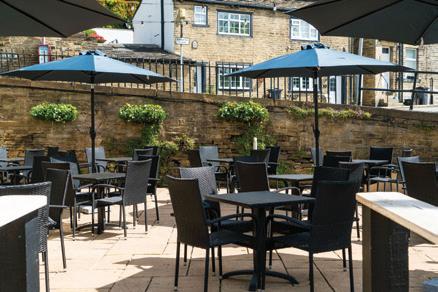

BOOK NOW FOR FATHER’S DAY
Father’s day breakfast also available

23 Kell Lane, Halifax HX3 7AY T: 01422 321066 www.stumpcrossinn.co.uk WELCOME
A warm welcome is always on the menu at Stump Cross Inn which is situated in the heart of the Shibden Valley at Stump Cross and within a stone’s throw of historic Shibden Hall.
TO STUMP CROSS INN
CARVERY SERVED Monday - Saturday 12-3.15pm & Sunday 12-6pm
Lebanese Flavoured Lamb with Chickpeas & Mushrooms A SIMPLE SUPPER

Method
Preheat the oven to Gas mark 3/160C (140C fan oven) Put the mushrooms in a bowl, cover with hot water and leave to soak for 30 mins. Heat the oil in a large oven proof heavy based casserole dish, add the lamb, season well and cook for a few mins each side until browned. Remove and put to one side.
Add the onion to the pot, season again and cook for 2-3 mins until soft, then add the ginger, garlic and lemon zest. Cook for
l Prep: 10 minutes
l Cook Time: 4 hours
(or 8 hours on low in a slow cooker)
l Serves 6
40g pot Cooks&Co dried mixed forest mushrooms
1 tbsp olive oil
About 1.1- 1.5 kg half leg of lamb
1 red onion, finely chopped
3 cm piece of fresh ginger, grated
3 cloves of garlic, crushed
1 tbsp harissa paste
1 lemon, zest and juice
1 tsp Sumac
2 tsp ground cumin
1 tsp ground cinnamon
1 tbsp paprika
500ml carton passata
900ml hot lamb stock
2 x 400g can Cooks&Co chickpeas, drained and rinsed
460g jar Cooks&Co roasted red peppers, drained and roughly chopped
Handful of fresh Dill, for garnish
Handful of pomegranate seeds for garnish
1 min then add the harissa, lemon juice and spices, stir, add the lamb back to the pot then pour in the passata and lamb stock. Drain the mushrooms and add, reserving the juice. Then sieve the juice to remove any gritty bits and add this. Tip in the chickpeas, bring to the boil then put a lid on and put in the oven for about 4 hours or until the lamb is really tender when poked with a sharp knife. If it starts to dry out at all, top up with a little hot water.
When ready, shred the lamb using two forks to pull it apart
25
Affordable Funeral Service


Losing a loved one can be one of life's most upsetting and distressing times. We go out of our way to help ease the worries where funeral arrangements are concerned.
Not only involved with losing a loved one is the emotional upset, but it can also be a time of financial worry and strain and we not only lend a sympathetic ear but also an affordable funeral service too.
Or maybe you see not the need for an elaborate funeral and want only a simple, low key occasion without all the fuss.

26 WWW.50PLUSMAGAZINE.CO.UK | 26
STEVE HOWARTH’S TEST DRIVE

TOYOTA C-HR
IF you want to stand out from the small SUV crowd then here is the car for you!
Toyota have always been cutting edge with their designs but the 2024 C-HR really nails that stealthy something different look.
The first generation C-HR was introduced here in 2016 and has sold very well but for this second incarnation a complete makeover means more kit, even sharper styling and impressive performance.
Power train wise there are two full hybrid choices starting with a 138bhp 1.8 petrol engine then a 194bhp 2.0. Both come with a CVT automatic gearbox and our test 1.8 has a claimed mpg of up to 57.6.
All C-HRs are well-equipped. In entry-level Icon trim you get 17inch alloy wheels, an eight-inch touchscreen display with Android Auto and Apple CarPlay, reversing camera, LED headlights and seven-inch infotainment display. Toyota Safety Sense also comes as standard which includes adaptive cruise control, lane departure warning with lane keep assist plus road sign recognition.
Mid-range Design adds front and rear parking sensors, 18-inch alloys, heated front seats with power lumbar adjustment, wireless phone charging, rear-cross traffic alert, and a 12.3-inch digital instrument cluster.
The top Excel trim (our test car) gets 19-inch alloys, LED adaptive headlights, part artificial leather and suede upholstery, memory power driver’s seat, panoramic glass roof, 360-degree camera system, driver monitoring system and front cross-traffic alert.
Toyota C-HR is comfortable, easy to drive, super-frugal and should prove very reliable being a Toyota plus the styling really sets it apart from boxier competition.
There are four drive modes from Eco to Sport and our 1.8 can hit 62 in a respectable 10.2 seconds while the bigger engine version can do it in 8.4.
The C-HR has relatively soft suspension giving a comfortable ride at both motorway speeds and around town. Although it is an SUV the driving position is much more sports car like being lower and more enveloping – including a high center console which has the wireless phone charging pad and handy storage.
There are physical controls for air-conditioning and all versions have a reversing camera to help get around rear view issues with that striking coupe styling.
Parking sensors are an option on entry-level Icon trim while Design and above get front and rear sensors as standard. Icon trim has an 8in touchscreen with Android Auto and Apple CarPlay smartphone mirroring and Cloud-based navigation.
All other trims have an upgraded 12.3in touchscreen high up on the dashboard and angled towards the driver for ease of use. Versions with the bigger screen also have built-in sat-nav and voice recognition.
You get a six-speaker stereo on most trim levels with a more powerful nine-speaker JBL sound system on our Excel model.
The C-HR feels reasonably plush inside and well screwed together with soft-touch plastics and suede-effect trim on the doors. Icon and Design models have seats trimmed in a fabric made from recycled bottles while that part suede-effect upholstery on our Excel model is made from 45 per cent old bottles.
You won’t have any issues with space in the front of the C-HR unless you’re well over six feet and thanks to its fairly wide interior you also won’t feel as though you’re rubbing shoulders with your front seat passenger.
Toyota says the fixed glass roof (on Excel and optional for Design) actually raises the height of the ceiling by 3cm plus it makes the interior feel more open and airy.
All C-HRs come with lots of safety kit including automatic emergency braking (AEB), blind-spot monitoring and road-sign assist plus lane-departure warning and automatic high-beam headlight assist.
While it is not the cheapest SUV Hybrid out there the C-HR does have lots of kit and style plus impressive frugality. The range starts from £31,290 up to our top spec Excel which is £38,150 on the road.
For more info see www.toyota.co.uk
28 MOTORING | 50 PLUS MAGAZINE
NISSAN LEAF SHIRO

ELECTRIC cars have made great strides in terms of performance and practicality in the few years since they first appeared on our roads.
I can recall testing one of the very first well over a decade ago which could only manage 14 miles on a full charge and had reliability issues – it suddenly discharged itself with no way to open the recharge flap meaning a call to those helpful breakdown people!
Fast forward to 2024 and my latest test vehicle was the 2024 Nissan Leaf – 150 miles plus range, 0 to 60 in a shade under 8 seconds and lots of standard kit.
Plus if you want to go even further there’s the Nissan Leaf e+ with a bigger battery, which gives a range of up to 239 miles with 214bhp compared to the standard car’s 148bhp.
Our test Leaf was in entry level Shiro trim and came with two charging leads meaning powering up via a 7kW wall box three pin home charger will take 7.5 hours. The e+ takes 11 hours while a 50kW fast charger will get the standard car’s battery from 20 to 80 per cent charge in an hour.
If you keep the battery topped up every time you park then range anxiety shouldn’t be an issue so you can enjoy the Leaf’s quiet, refined and comfortable ride and the many driving aids.
One of which is Nissan’s e-Pedal system which uses resistance from the electric motor to allow you to drive with just one pedal - without having to press the brake unless in an emergency. Once you get the hang of it the system can boost your range but if you just can’t live with it the e-pedal can be switched off for normal driving.
The Leaf also has Nissan’s ProPilot driver assistance which includes adaptive cruise control, lane assist and traffic jam assist, which can control the car in slow-moving traffic.
The standard Leaf has that 148bhp electric motor which gets its energy from a 40kWh battery while the longer range e+ has a 62kWh battery.
Every Leaf also comes with automatic emergency braking (AEB) and pedestrian detection as standard along with blind-spot monitoring and rear cross-traffic alert.
Other standard kit on our Shiro version includes smart 17” alloy wheels, power fold mirrors, LED running lights at the front and tail lights, rear privacy glass, heated seats all round and a heated steering wheel, front and rear USB ports, adaptive cruise control, an 8” central touch screen infotainment system and 360 degree cameras plus auto lights and wipers.
After a week with the Leaf I found that regular overnight charging kept it topped up and ready to go - I even got used to the e-pedal system, completing several journeys without even touching the brake pedal.
First introduced by Nissan in 2010 the Leaf was the world’s bestselling electric car until Tesla took that title a few years later but the recently refreshed Leaf remains one of the front runners in the electric vehicle market.
Our Shiro version with optional Artic While special paintwork is £28,790 on the road while a range-topping Tekna will cost you £31,995.
More info at www.nissan.co.uk

29
For all the latest car tests see the motoring section of our website at www.50plusmagazine.co.uk/motors/






A GARDENER’S PARADISE





S H O P I N S T O R E C L I C K & C O L L E C T L O C A L & N AT I O N A L D E L I V E R Y | |
GARDEN CENTRE • TEA ROOM MILL SHOP • CAFÉ • FARM SHOP Todmorden • OL14 7TJ GARDEN CENTRE & BISTRO Rochdale • OL16 4UX w w w g o r d o n r i g g c o m











































































